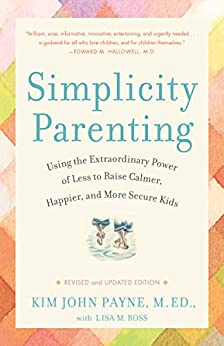More on this book
Community
Kindle Notes & Highlights
Read between
June 13 - July 2, 2020
Viewers describe themselves as “relaxed” and “passive” while watching, yet while the sense of relaxation ends when the set is turned off, the feelings of passivity and lowered alertness continue. Survey participants commonly reflected that television had “somehow absorbed or sucked out their energy, leaving them depleted,” with “more difficulty concentrating after viewing than before.”
studies linking the alarming rise in childhood obesity to increased time spent watching TV.
The feature documented that 95 percent of missing children are runaways (most of whom come home within three days) and that of the rest, most are child custody disputes.26
According to the Justice Department, the number of kidnappings of children by strangers has not increased for the past twenty years.
almost twenty years ago, in the early 1990s. It has since become so ubiquitous—as a term and a cultural phenomenon—that different degrees of hovering have been noted. (According to a study at the University of Texas at Austin, “Black Hawk parents” are the most angry and extreme.)
Generation X (those born between 1965 and 1981) experienced when they were children. One in six of that generation (many of whom are parents today) grew up with a single parent, and more than 40 percent were latchkey kids.
In my work and travels I often see a parental type I think of as “Sportscasters.” Basically, a “sportscasting” parent drowns a child in words. In real time (that is, blow-by-blow) they telecast everything the child touches, does, is wearing, or even what they may be thinking. “Would you look at this! Peter, darling, look at you! In your bright red shoes you’re doing a wonderfully silly dance.
The “corporate parent” holds a metaphorical image of their family as a corporation, or a corporate team. Decisions are made on the basis of a mythical “bottom line.” What must be expended to get the desired results? And just what are the desired results? The ultimate goal is a “product launch”: the launching of their child into the world.
The “little buddy parent” (which morphs, as a child gets older, into the “best friend parent”) sees no separation between their world—their adult conversations and activities—and their children’s. They invite their children’s involvement in decisions; they expend a lot of time and ever so many words on justifications mainly to avoid one word: no. Often this lack of boundaries speaks to a kind of loneliness. Some parents are so focused on their children, and isolated from adult friendships, that they seek a more equal, friendship-based relationship from their kids.
The “clown parent” feels the need to be “larger than life,” an entertainer. They believe that childhood, in fact, needs to be “larger than life,” a sort of ever-expanding carnival of delights. There is great love behind this image, but also exhaustion. My mental image of this parent (“Honk! Honk!”) isn’t one of them entertaining, and speaking with enthusiasm and animation. I imagine them later, depleted, like a puppet that has been set down. This kind of parenting often leads to disappointment—for the child, obviously, whose expectations are elevated daily, but also for the parent, who is left
...more
Before you say something, ask yourself these three questions: Is it true? Is it kind? Is it necessary?
Sometimes in my work, whether in family therapy or in a school setting where there are bullying issues, I challenge parents to go on a three-week, self-imposed put-down diet.


